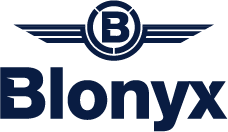Active recovery involves performing low-intensity exercises like jogging or swimming after a high-intensity training session.
Many athletes favour this approach to recovery over stationary rest, also called passive recovery, since it maintains blood circulation and starts the muscle repair process.
However, you should avoid active recovery if you suspect an injury and opt for passive recovery or medical help instead.
The Benefits of Active Recovery
Active recovery will help you recover faster and train at a higher level during your next training session. Some benefits of active recovery include:
- Alleviating muscle fatigue and soreness by reducing lactic acid buildup in your muscles
- Encouraging waste and toxin removal from your muscles by maintaining a steady flow of oxygen and nutrient-rich blood
- Helping you maintain your muscle flexibility and reduce muscle tightness
When to Implement Active Recovery into Your Routine
Depending on your type of training or how you’re feeling afterwards, at what point you implement active recovery into your routine can play a role in its effectiveness.
As a general post-training cooldown: Gradually winding down with a light activity after an intense training session significantly impacts your recovery. For example, if you just completed a run, try a light jog for your active recovery. You should also aim to use no more than 50% of your maximum effort during a cooldown for the best results.
During high-intensity interval training: Including active recovery exercises between high-intensity sets will also benefit your recovery. You should maintain a moderate activity level of 60–70% of your maximum effort during active recovery between high-intensity sets for more efficient recovery.
And yes, even on rest days: Engaging in light activities on your days off can help alleviate any remaining muscle soreness from your previous training session and promote your recovery.
The Best Active Recovery Exercises
You want to engage in low-impact exercises that keep your heart pumping and blood moving. It’s also wise to incorporate activities that involve different movements than your training session to give your body and mind a rest.
Some of the best active recovery exercises include:
- Light jogging or walking: These activities can improve blood flow and assist in the recovery process.
- Swimming: A low-impact activity that eases the joints and can help reduce inflammation.
- Cycling: A gentle way to stay active without putting pressure on the joints.
- Stretching: These practices can elongate sore muscles, improve flexibility, and decrease stress and inflammation.
- Using a foam roller or lacrosse ball: This technique can help alleviate muscle tightness, decrease inflammation, and enhance mobility.
How Supplementation Aids Active Recovery
In addition to light physical activity, supplements can significantly enhance the effectiveness of your active recovery. We typically recommend three supplements to aid recovery: HMB, protein and something hydrating like an electrolyte drink mix.
HMB: HMB reduces soreness and allows you to bounce back faster after an intense training session by slowing muscle protein breakdown and accelerating new protein synthesis. An HMB supplement like HMB Sport supports your recovery by promoting muscle repair and growth.
Protein: Protein helps you recover faster with less soreness, reduces your time between training sessions and maintains lean muscle mass. Consuming a protein supplement like Egg White Protein Isolate within one hour of training gives your body the essential amino acids needed for muscle repair and the rebuilding of damaged tissues.
Electrolyte drink mixes: Proper hydration plays an equally important role in your recovery as active recovery exercises. Hydration facilitates nutrient transport, waste removal and electrolyte balance, all of which are necessary for efficient muscle repair. We suggest sipping on a real food hydration solution like Hydra+ during your active recovery to replenish the salt (sodium) and natural sugars (glucose) your body needs to absorb water and prevent dehydration.
If you’re interested in the optimal supplementation for recovery and for more information about how to incorporate supplements into your training routine, check out our supplement user guides.
Safety Considerations for Active Recovery
Active recovery is generally safe, but it's crucial to listen to your body's signals.
If you're experiencing pain or suspect an injury, take a rest or consult with a healthcare professional before continuing any physical activity. It’s also important to note that in cases of extreme fatigue, passive recovery might be necessary.
Key Takeaways
Active recovery is a powerful technique that any athlete can (and should) add to their training routine, offering numerous benefits like faster recovery, reduced muscle soreness and tightness, increased energy for subsequent training sessions and greater overall performance.
By incorporating low-intensity exercises and supplementation that aids recovery into your routine, and listening to your body's unique needs, you can improve your recovery process and achieve your athletic ambition more quickly.
Remember, the key to successful active recovery is balance and moderation, so always prioritize your health and well-being above all.
— That’s all for now, train hard!

